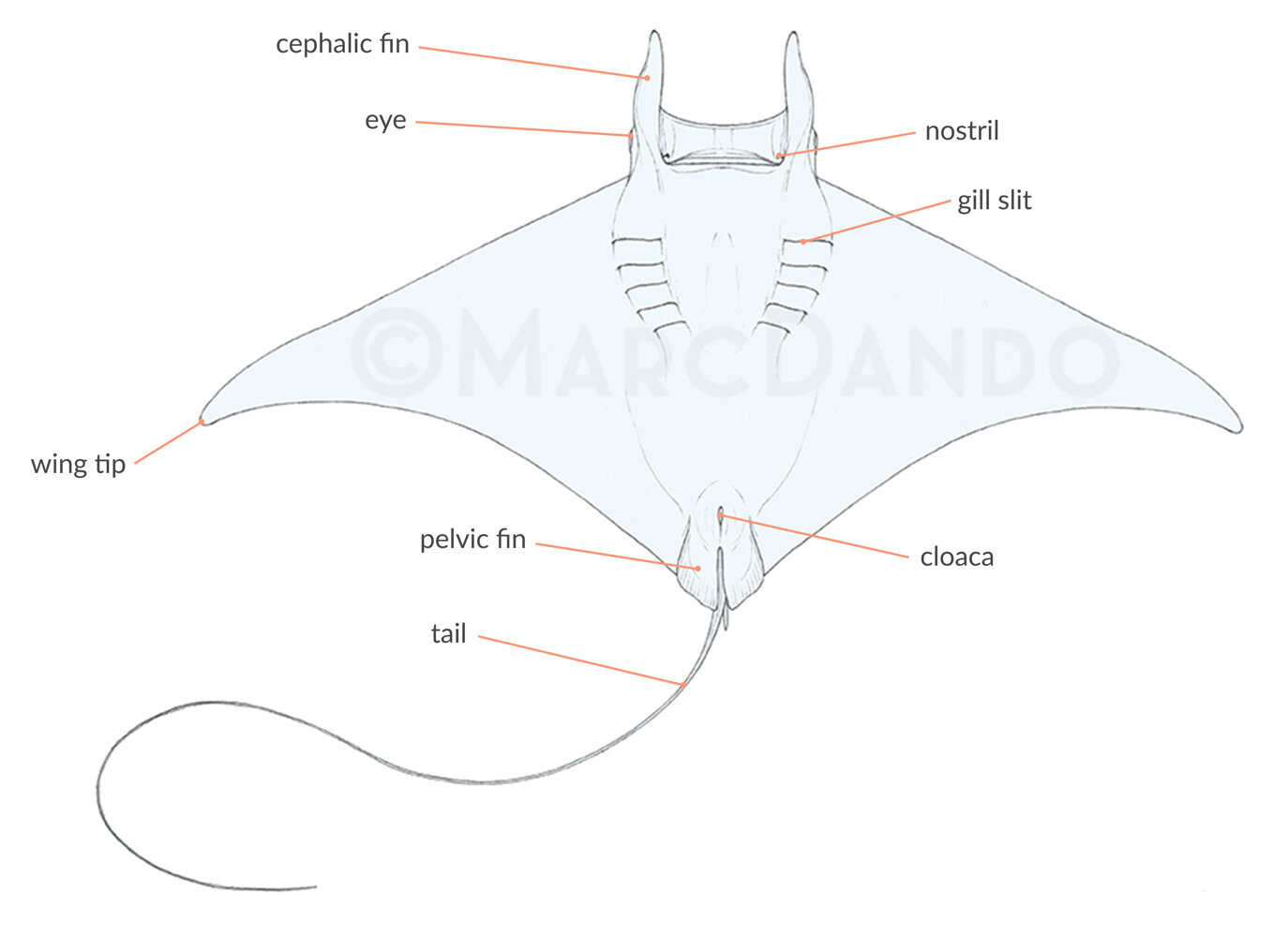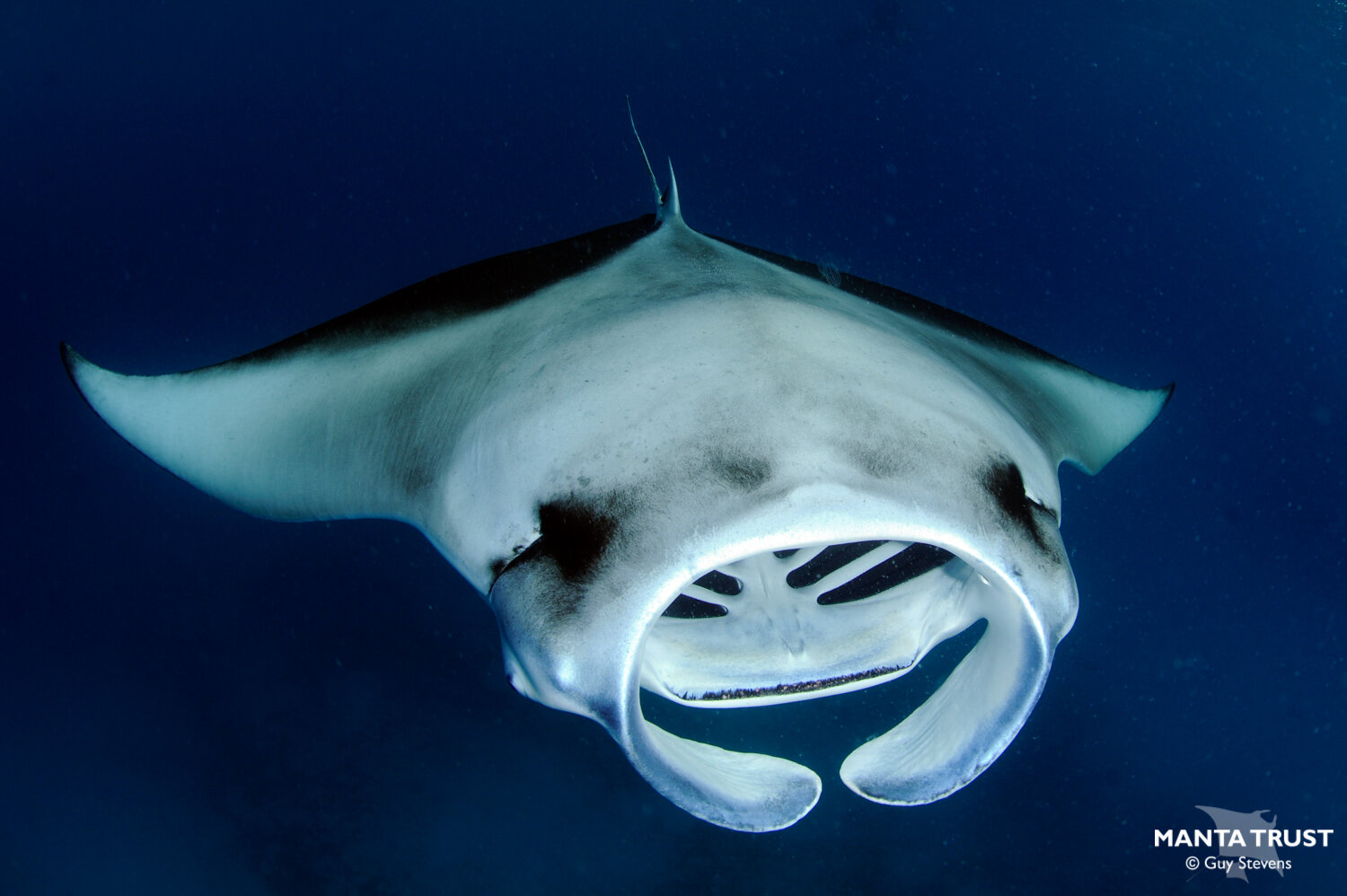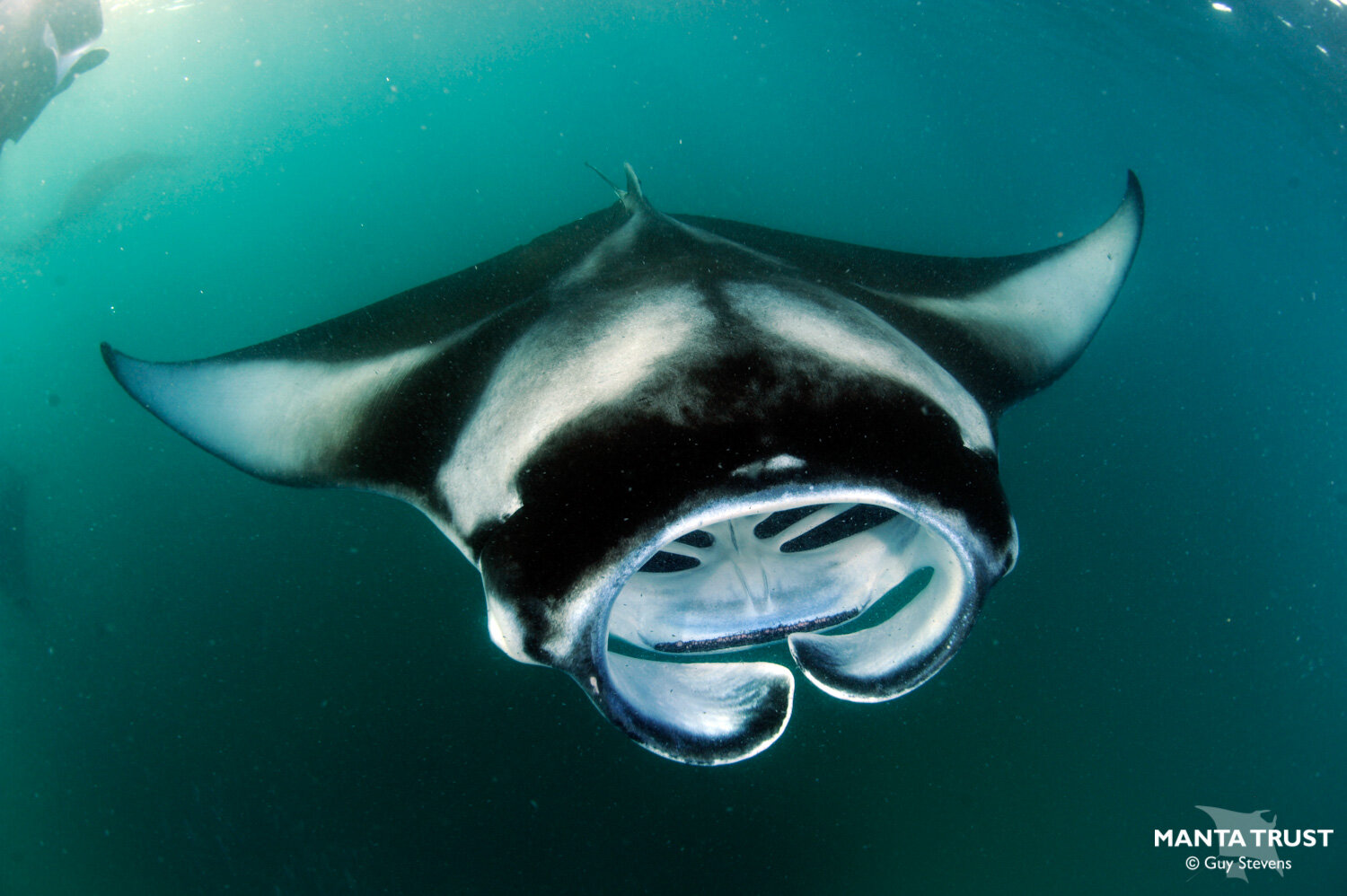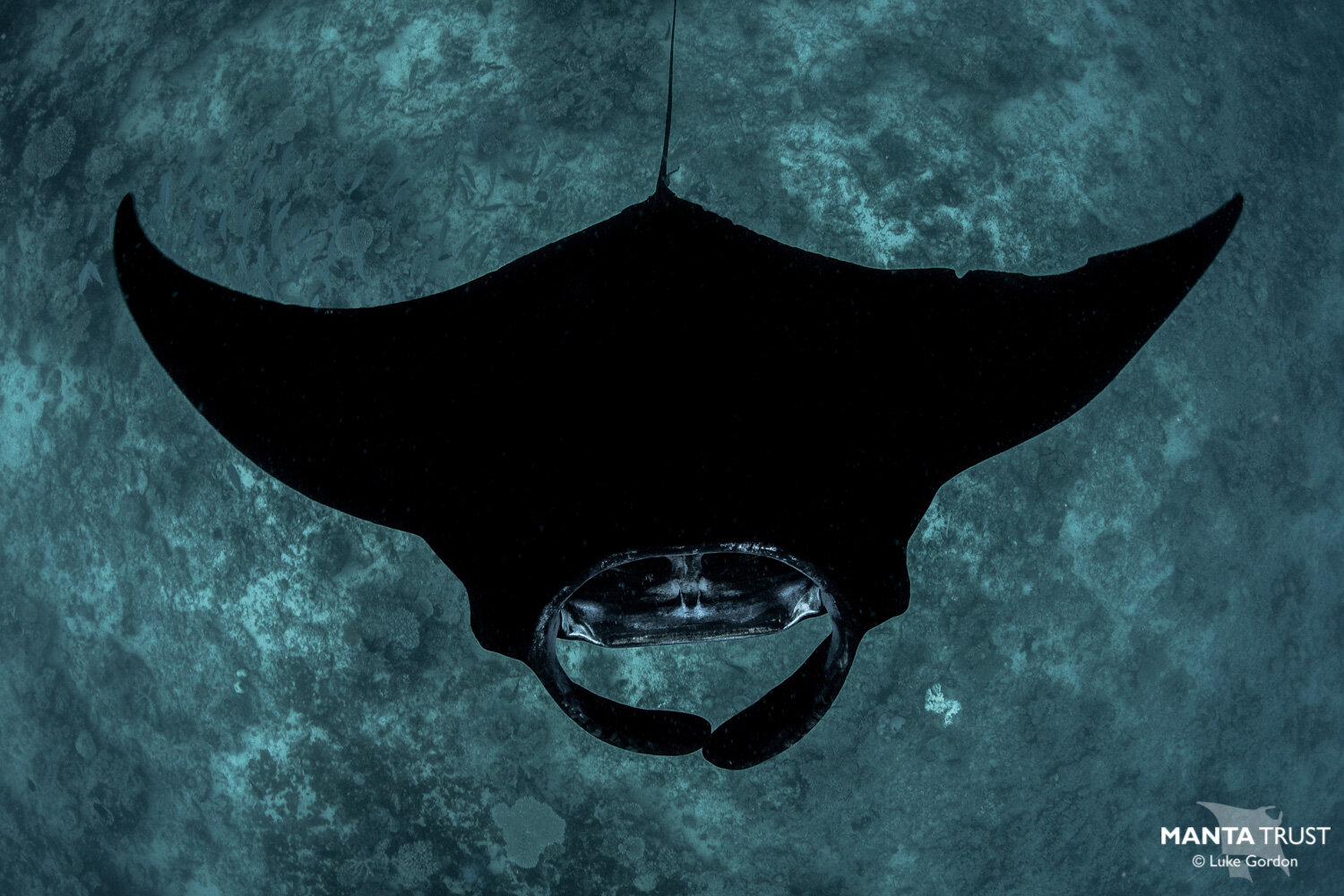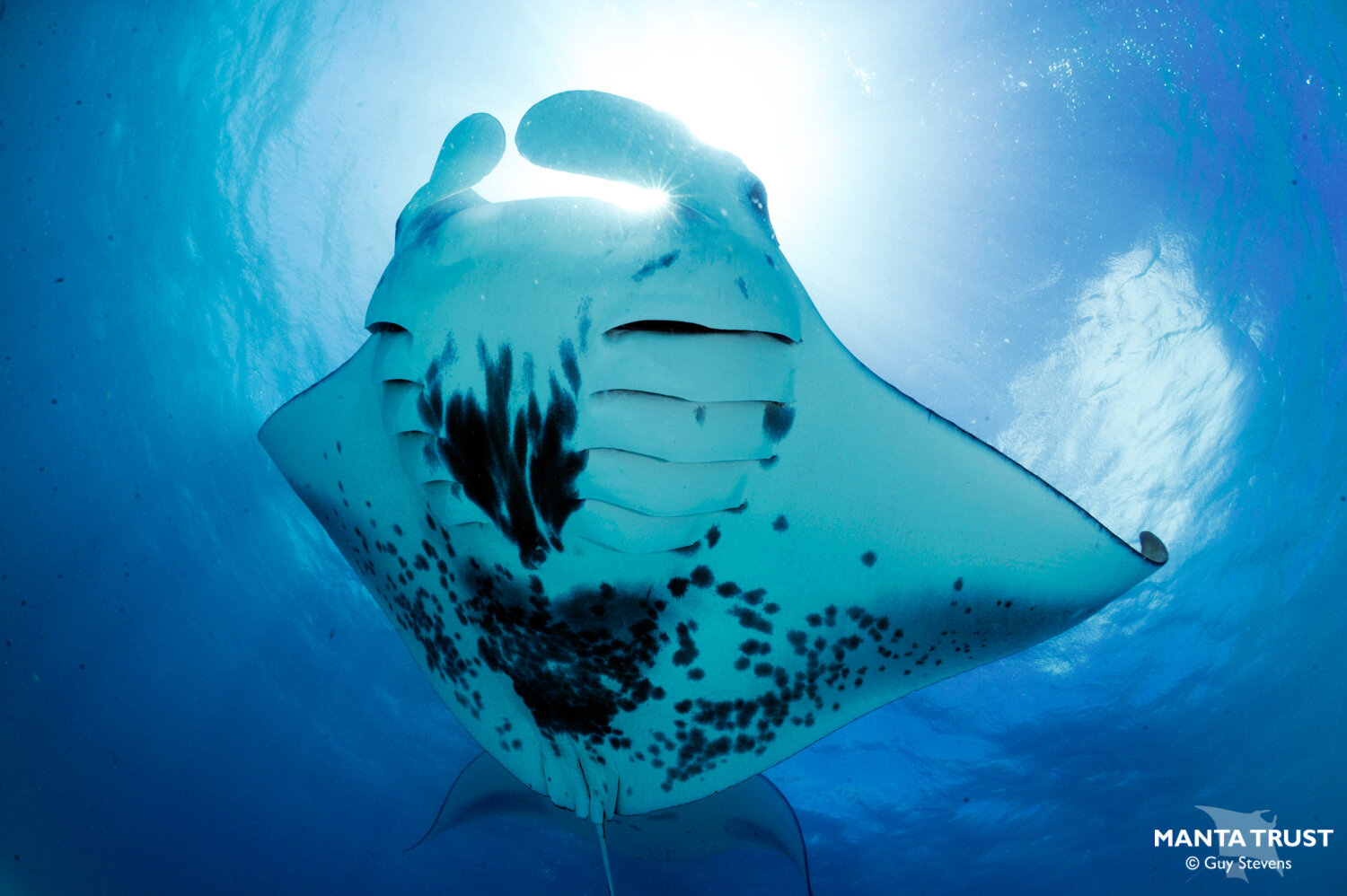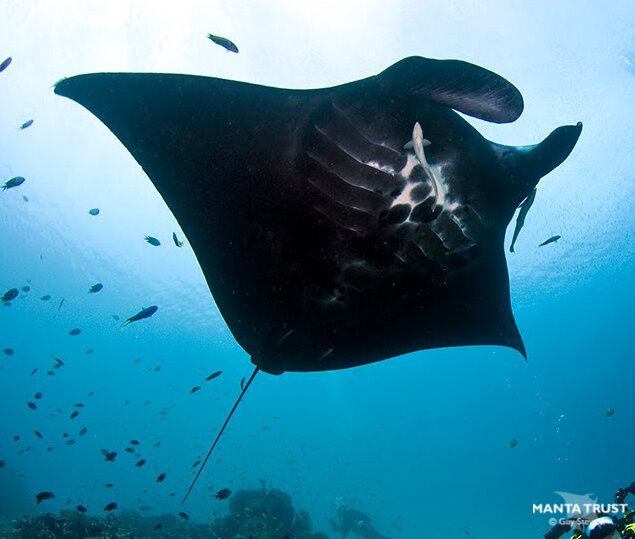We know even less about devil rays than we do mantas; they are shy and elusive, making them harder to observe and study in the wild.
Devil rays are the manta’s smaller and more elusive relatives. They are generally very shy towards divers, making it hard to observe and study their behaviour in the wild. But what they lack in size, they make up for in acrobatic enthusiasm. During courting events, several of the pygmy devil ray species (particularly Mobula munkiana) are known to aggregate in vast shoals that number in the thousands - delivering one of the ocean’s greatest spectacles. As a shoal gets bigger, individual rays start to propel themselves out of the water, reaching heights of over two metres, before belly-flopping back into the ocean with a crash. More and more join in over time, until the air is filled with leaping rays. The reason for this behaviour is unclear, but scientists believe the most likely purpose is communication. It could be that the louder splashes created by the biggest individuals are those most likely to attract a mate, but that does not seem to stop smaller rays joining in the excitement. Even less is known about devil rays than mantas; they are generally very shy towards divers, making it hard to observe and study their behaviour in the wild.
Manta and devil rays first appear in the fossil record around 28 million years ago; evolving from bottom dwelling rays, they adapted to life in the water column. They are defined by their specially modified gill plates, which they use to strain zooplankton from the water column. Mobulid rays have a conservative life history strategy; they take a long time to reach sexual maturity, are slow to reproduce, and tend to give birth to a single pup every two to five years following a nine to twelve month pregnancy. This strategy may have served them well for millions of years, but unfortunately these traits, paired with their highly migratory nature, now leave mobulids extremely vulnerable to overexploitation by man.








